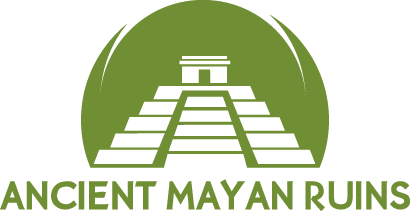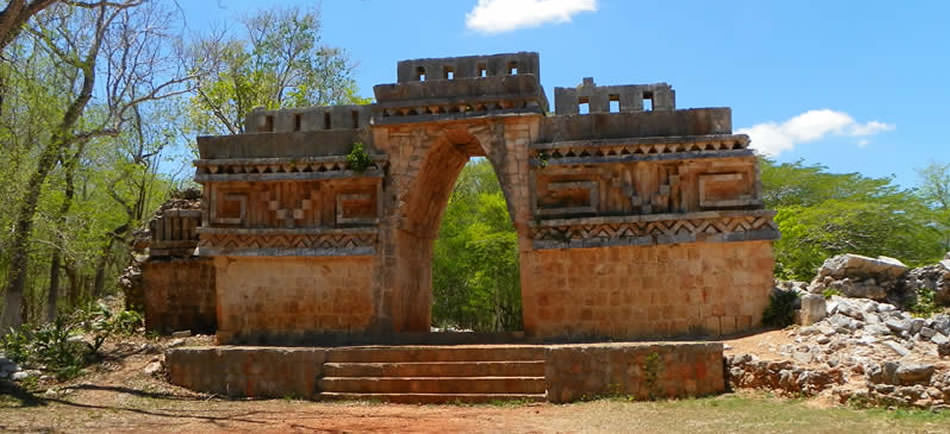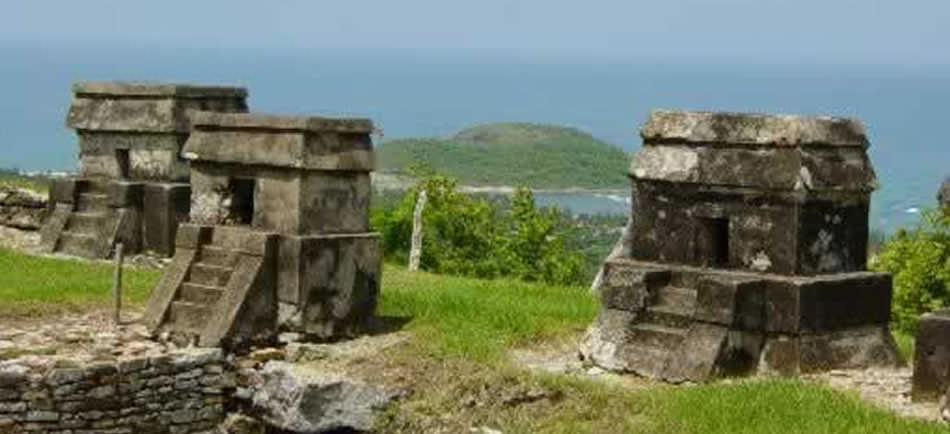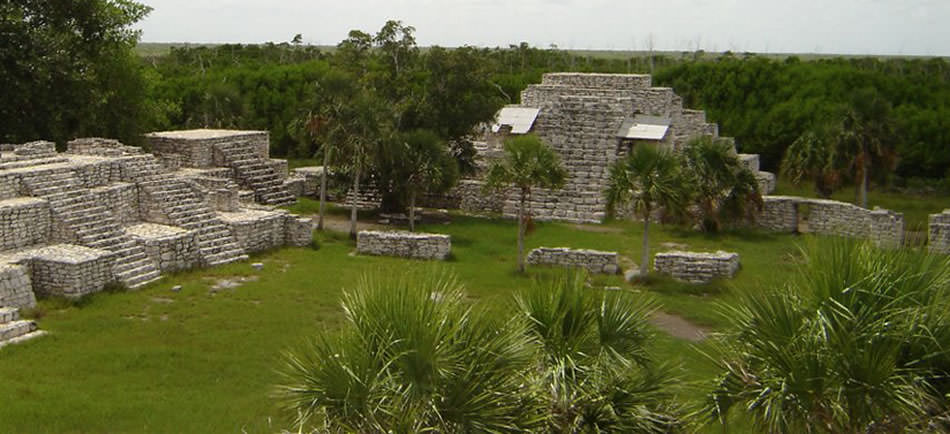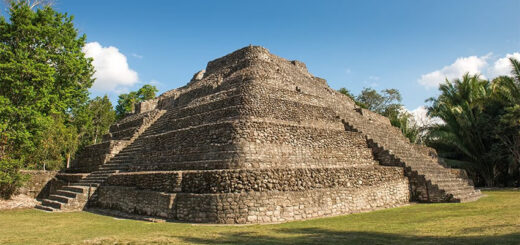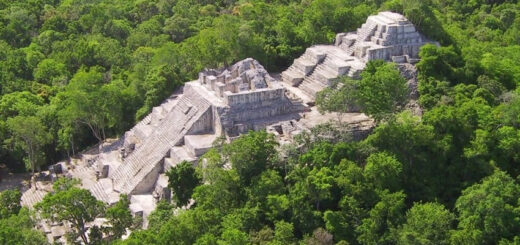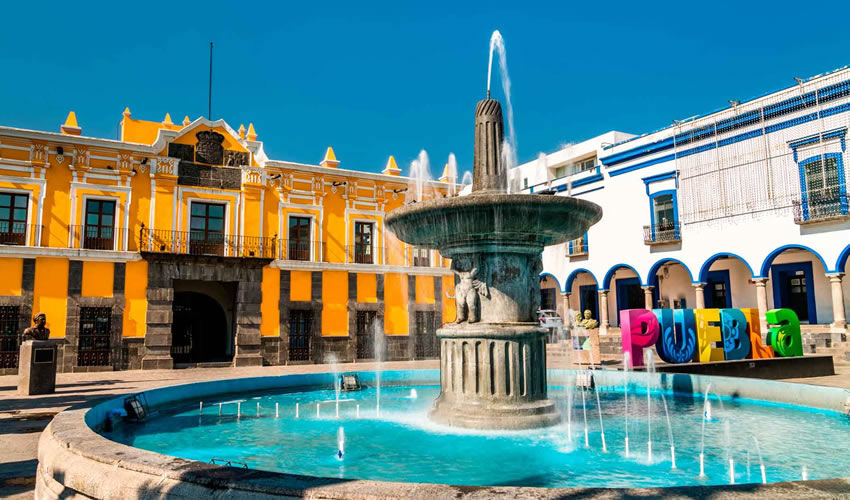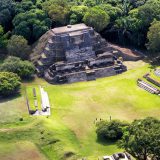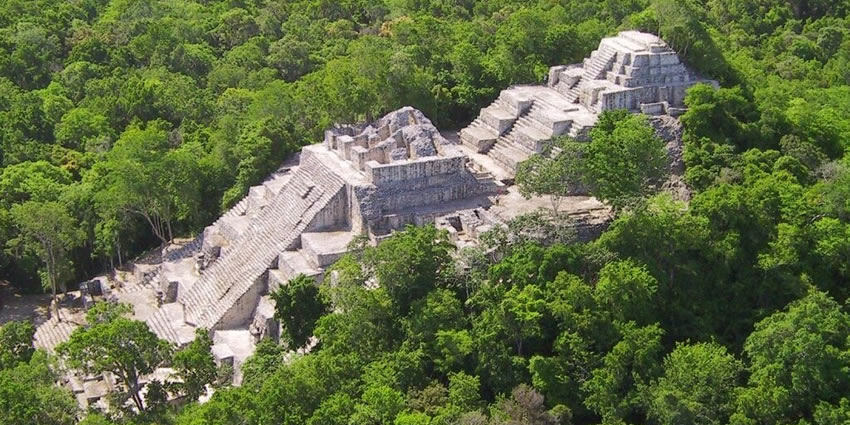
Calakmul
Calakmul archaeological site that beckons adventurers and history enthusiasts. Once a thriving Mayan metropolis, this ancient city is now a UNESCO World Heritage site, renowned for its extensive ruins and rich history.
Calakmul (“City of the Two Adjacent Pyramids”) offers a unique glimpse into the grandeur of the ancient Mayans. Calakmul features over 6750 ancient structures and one of the tallest Mayan pyramids at 45 meters high.
Calakmul was one of the most powerful cities in the Maya lowlands, serving as the seat of the Kingdom of the Snake, or the Snake Kingdom, during the Classic period (approximately 250 to 900 CE).
The city wielded considerable influence, with its emblem glyph of the snake head signifying its dominance. At its peak, Calakmul had a population of around 50,000 people and governed a vast territory, extending its control over areas as far as 150 km away.
The site’s remote location means fewer tourists, offering a serene and immersive experience. Navigate through dense jungle paths and ascending ancient pyramids for breathtaking views of the surrounding rainforest.
Calakmul’s allure lies not only in its impressive ruins and rich history but also in its pristine natural setting, making it a must-visit destination for those seeking a blend of cultural and natural wonders. Calakmul promises a captivating and unforgettable experience.
Geography and Environment
Calakmul is situated in the heart of the greater Petén Basin, just 35 km from the Guatemalan border. The city lies on a limestone dome, 35 meters above the surrounding lowlands, providing a strategic advantage and fertile soils.
The area around Calakmul is covered by dense, lush forests, forming part of the expansive Calakmul Biosphere Reserve, which spans over 7,300 sq km. This tropical reserve is often called the “second lung of America” due to its vast, verdant landscapes and vital role in the ecosystem.
Calakmul Biosphere Reserve
A visit to Calakmul is not just a journey into the past but also an opportunity to experience incredible biodiversity. The surrounding forests are home to over 86 species of mammals, including jaguars, pumas, ocelots, and spider monkeys.
Bird enthusiasts will be delighted to discover more than 300 species of birds inhabiting the area. This rich variety of wildlife makes Calakmul a paradise for nature lovers and photographers.
Best Time to Visit Calakmul
The best time to visit Calakmul is during the dry season, which runs from November to April. During these months, the weather is more favorable, with lower humidity and less rainfall, making exploring the ruins and surrounding jungle easier.
The wet season, from May to October, brings heavier rainfall and can make some areas more challenging to access. However, the lush greenery and vibrant wildlife during this time can also provide a unique and immersive experience.
History and Chronology
Calakmul boasts a long and complex history, spanning from the Middle Preclassic to the Postclassic period.
Calakmul maintained strong political ties with neighboring cities like El Mirador, Nakbe, and El Tintal, suggesting a network of influence that began in the Preclassic and continued into the Classic period.
By the height of the Classic period, Calakmul emerged as the most powerful city in the region, challenging the dominance of Tikal in what has been described as a rivalry between two Maya “superpowers.”
Calakmul vs. Tikal: The Epic Rivalry
The Classic period of Maya history is largely defined by the intense rivalry between Tikal and Calakmul. Initially, Tikal rose to prominence following the decline of earlier dominant cities like El Mirador and Nakbe.
However, Calakmul, with its equivalent resources and strategic alliances, contested Tikal’s supremacy. This power struggle peaked in the latter half of the 6th century AD, with Calakmul gaining the upper hand, though it never fully extinguished Tikal’s power.
The tide turned in AD 695 when Tikal won a decisive battle against Calakmul. Subsequent victories over Calakmul’s allies further solidified Tikal’s resurgence before both cities eventually succumbed to the widespread Classic Maya collapse.
The rivalry extended beyond mere resource competition, rooted in distinct dynastic histories and ideological differences.
Calakmul’s lineage is traced back to El Mirador, while Tikal’s dynasty was heavily influenced by Teotihuacan. Notably, Tikal’s monuments emphasized male rulers, whereas Calakmul often highlighted the joint rule of kings and queens, reflecting its unique political culture.
Preclassic Period
During the Preclassic period, Calakmul was already a significant urban center. The early history remains somewhat obscure, but dynastic lists suggest that Calakmul’s political authority may have been inherited from earlier cities like El Mirador and Nakbe.
This connection hints at a dynastic relocation to Calakmul following the collapse of these preeminent cities.
Early Classic Period
In the Early Classic period, both Calakmul and Tikal continued to thrive. Hieroglyphic texts from this era, such as those found on Stelae in Structure 2, record the enthronement of Calakmul’s kings as early as AD 411.
By the mid-6th century, Calakmul’s political influence expanded, leading to conflicts with Tikal.
Notably, the king known as Sky Witness played a pivotal role, defeating Tikal and initiating a prolonged period of Calakmul dominance starting in 562. This victory marked the transition from the Early Classic to the Late Classic period.
Late Classic Period: Wars and Expansion
During the Late Classic period, Calakmul engaged in numerous military campaigns. Under kings like Uneh Chan and Yuknoom Che’en II (Yuknoom the Great), Calakmul expanded its influence through strategic alliances and warfare.
Uneh Chan’s campaigns against Palenque in 599 and 611 exemplify this aggressive strategy, aimed at controlling lucrative trade routes. Yuknoom Che’en II’s reign saw Calakmul at its zenith, with extensive construction projects and increased stela production.
Calakmul and Dos Pilas
Calakmul’s strategy included fostering alliances with cities like Dos Pilas, a Tikal outpost initially loyal to Tikal.
Following Calakmul’s victory over Dos Pilas in 648, its ruler, B’alaj Chan K’awiil, became a vassal of Calakmul and turned against Tikal, capturing it in 657. This period of dominance saw Calakmul attempt to encircle Tikal with allied cities, maintaining a network of loyal vassals across the Maya lowlands.
Decline and Collapse
The late 7th century marked the beginning of Calakmul’s decline, culminating in a catastrophic defeat by Tikal in 695. This defeat significantly weakened Calakmul’s political influence, leading to fewer alliances and less recognition of its kings as overlords.
Subsequent rulers, such as Yuknoom Yich’aak K’ak’, struggled to maintain Calakmul’s dominance, with the city’s influence waning further by the early 8th century.
By the late Classic period, Calakmul’s political presence diminished significantly. Major allies like El Peru and Naranjo suffered defeats, and the city experienced a gradual collapse.
By the early 9th century, elite activities continued in a reduced capacity, but the political authority had largely disintegrated. The final abandonment of Calakmul likely occurred by the early 10th century, though remnants of its population and elite presence persisted slightly longer.
Legacy
Despite its eventual decline, Calakmul’s legacy endures through its monumental architecture, extensive causeway networks, and rich dynastic history. The city’s archaeological remains provide invaluable insights into the political dynamics, warfare, and cultural developments of the ancient Maya civilization.
Modern History and Rediscovery of Calakmul
The rediscovery and modern investigation of Calakmul began in the early 20th century, bringing to light the significance of this ancient Maya city.
In 1931, the botanical explorer Cyrus Lundell first reported the site, noting its remarkable structures and extensive ruins hidden within the dense forests of the Yucatán Peninsula.
Lundell’s report highlighted the presence of more than 60 stelae, monumental stone slabs adorned with intricate carvings and inscriptions, suggesting the historical importance of Calakmul. This discovery quickly drew the attention of Sylvanus Morley, a prominent Maya archaeologist associated with the Carnegie Institution of Washington.
Morley visited Calakmul in 1932, leading the first formal archaeological expedition to the site. During the 1930s, his team conducted surveys and mapped the core of the ancient city, recording a total of 103 stelae.
These early investigations revealed the vastness of Calakmul and hinted at its significant role in the ancient Maya civilization. Despite these promising beginnings, archaeological work at Calakmul came to a halt in 1938.
It wasn’t until 1982 that archaeologists returned to Calakmul. William J. Folan, leading a project on behalf of the Universidad Autónoma de Campeche, spearheaded the renewed investigations.
Folan’s team undertook extensive excavations and research at Calakmul, working continuously until 1994. Their efforts significantly expanded the understanding of the site’s architecture, urban layout, and historical context.
Currently, Calakmul is the focus of a comprehensive project led by the National Institute of Anthropology and History (INAH) under the direction of Ramón Carrasco.
This large-scale project aims to uncover more about the city’s history, culture, and its interactions with other Maya cities. Ongoing excavations and studies continue to reveal new insights, solidifying Calakmul’s status as a key archaeological site and a testament to the grandeur of the ancient Maya civilization.
Calakmul Archaeological Zone
Calakmul is an impressive Maya archaeological site located in the dense jungle of the Petén Basin in Campeche, Mexico. It’s one of the largest and most significant sites of the ancient Maya civilization, offering a unique glimpse into their advanced urban planning and architectural prowess. Here’s what you can expect when visiting:
The site core spans about 2 square kilometers and contains around 1,000 structures. This area is packed with monumental buildings, plazas, and courtyards. Beyond the core, the periphery covers over 20 square kilometers and includes around 6,250 smaller residential structures.
The site features several massive pyramids, including Structures 1 and 2, which are among the tallest in the Maya world. You can climb these pyramids for breathtaking views of the surrounding jungle.
The core area has numerous temples, palaces, and ceremonial buildings. The buildings are arranged in a concentric pattern, with the most significant structures at the center.
Calakmul boasts an extensive network of canals and reservoirs, including the largest Maya reservoir, which still holds water today.
The site is connected by a network of eight causeways, some of which stretch for kilometers and link Calakmul to other Maya cities.
The site contains 117 stelae, most depicting rulers and their wives. Though many are eroded, they offer a glimpse into the city’s history. Intricate murals depict daily life and market scenes.
The outskirts of the site include commoners’ residences, some of which are interspersed with high-status homes and public buildings.
Calakmul is a fascinating destination for those interested in ancient civilizations and offers a rich, immersive experience amid the lush backdrop of the jungle.
The nearest towns and villages:
- Xpujil is located approximately 60 kilometers away.
- Chicanná is situated about 55 kilometers from Calakmul.
- Conhuás is located around 35 kilometers from Calakmul.
These locations offer access to local guides and transportation options.
Major cities offering guided tours to Calakmul:
- Mérida is approximately 400 km from Calakmul.
- Campeche City is approximately 350 km away.
- Cancún and Playa del Carmen are 600 to 650 km.
- Tulum is located about 550 km from Calakmul.
Many tour operators provide multi-day tours to Calakmul. These tours typically include transportation, accommodations, guided visits to archaeological sites, and insights into the cultural significance of the Maya civilization.
Tourist Information
- Calakmul Ruins are open from 06:00 to 11:30 (closed on Monday).
- The entrance fee is generally modest, around 95 MXN (2024).
The surrounding biosphere reserve is home to diverse wildlife, including howler monkeys, jaguars, and numerous bird species.
Consider hiring a guide to get a deeper understanding of the site’s history and significance.
What to bring and what to wear?
Bring water and snacks. Stay hydrated, as exploring the ruins can be physically demanding, especially in the heat. Light snacks or energy bars can keep you fueled during your visit.
Wear sturdy, comfortable shoes suitable for walking and climbing, as the terrain can be uneven. Opt for lightweight, breathable clothing to stay cool. Long sleeves and pants can also help protect against insect bites.
Protect yourself from the sun with a wide-brimmed hat and sunglasses. The area can have mosquitoes, especially during certain times of the year, so bring repellent to avoid bites.
Capture the beauty and history of the ruins, but remember to respect any rules regarding photography. Enjoy your exploration of Balamkú Ruins, and immerse yourself in the fascinating history they offer!
